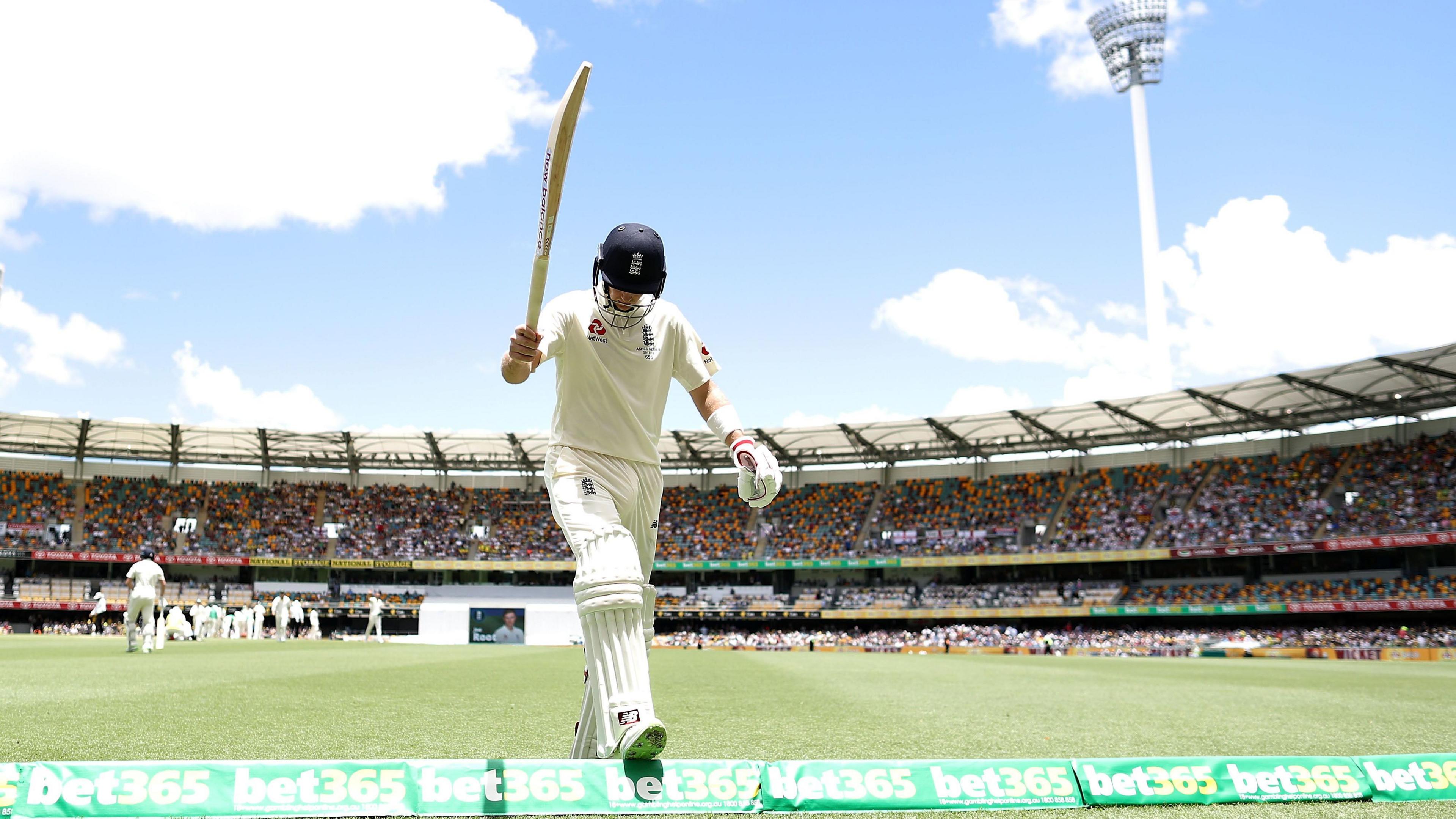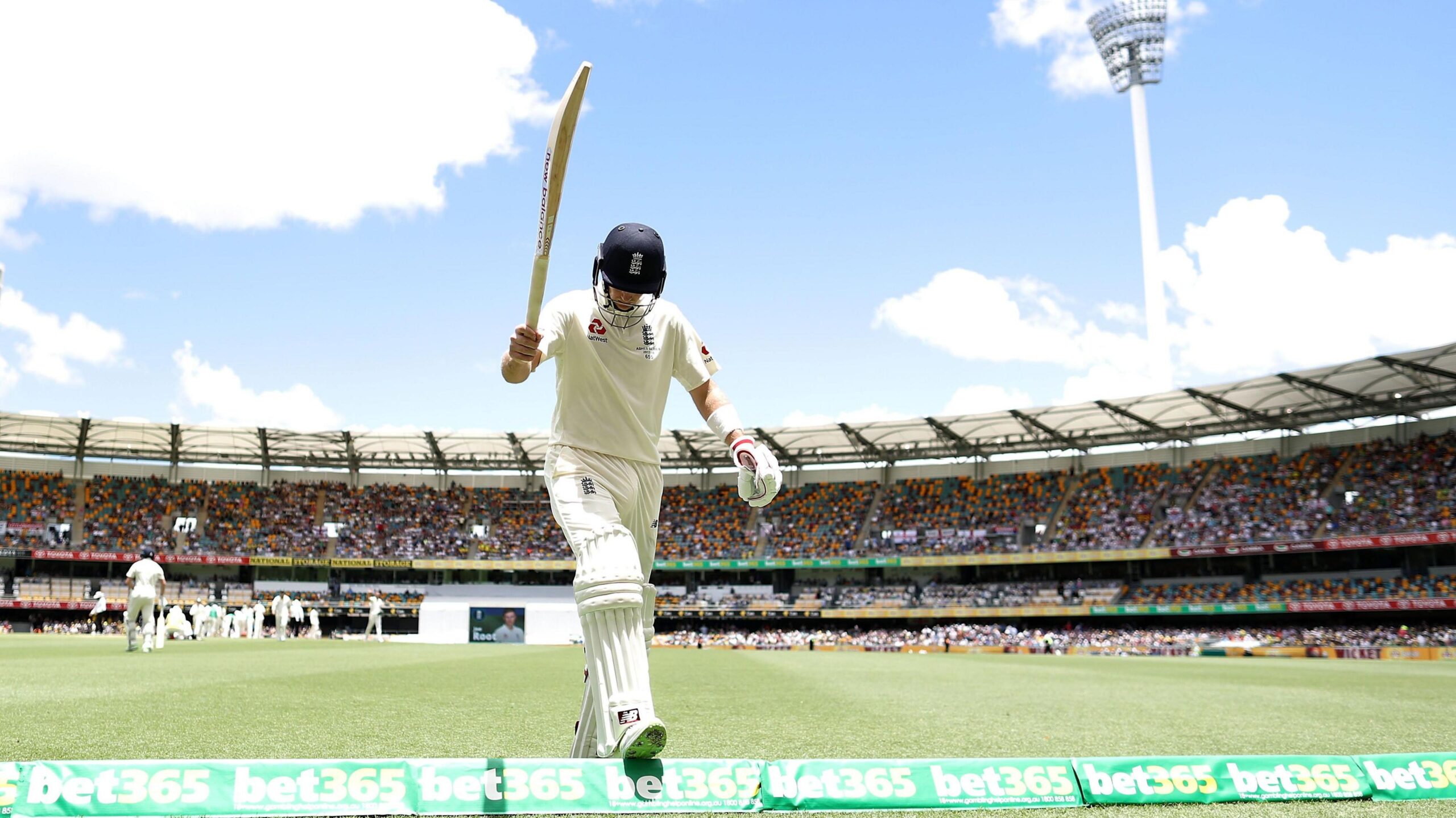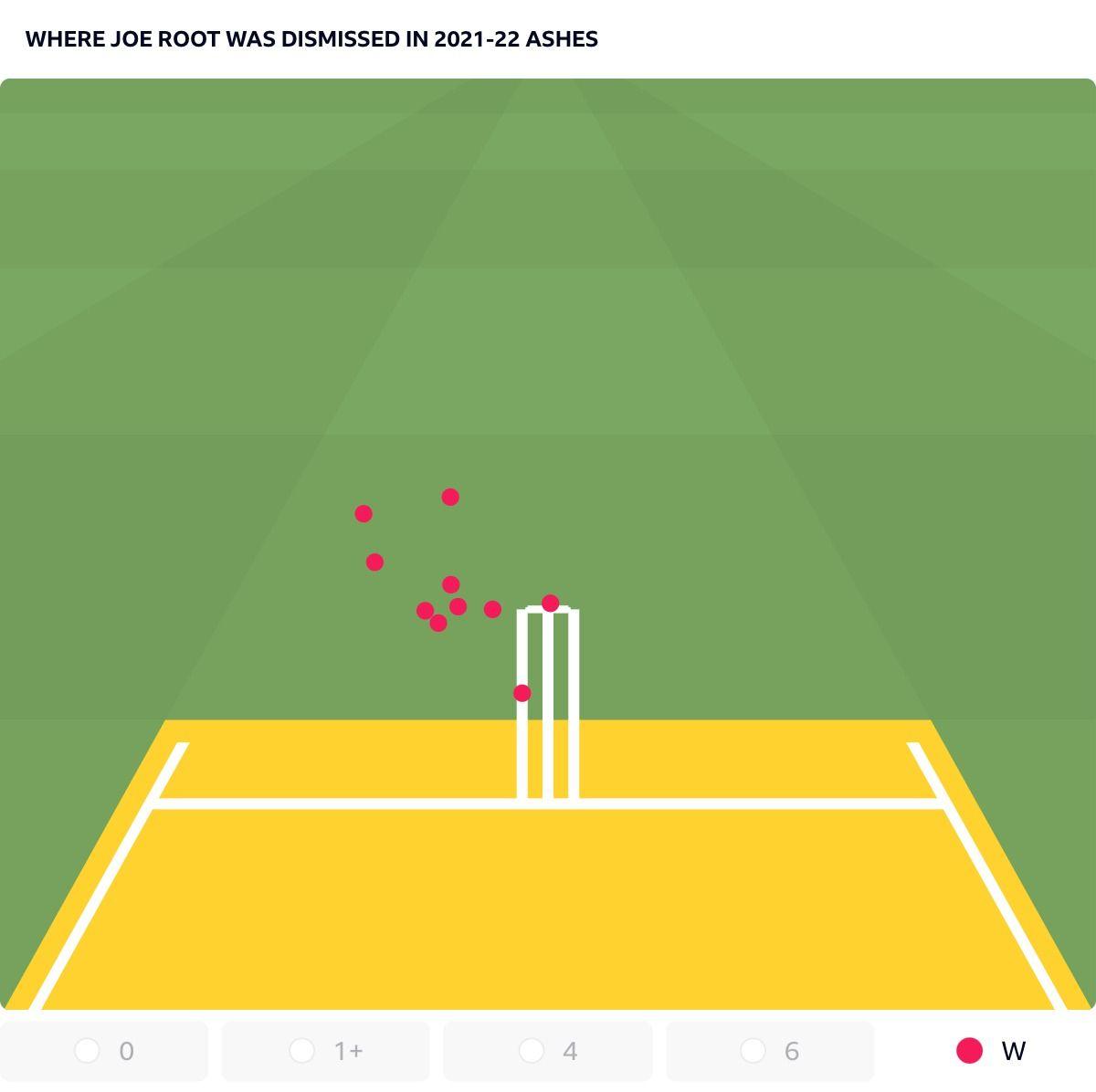Joe Root. Century. Australia.
You know the rest by now.
England’s greatest batter has done almost everything except score a Test hundred down under.
Some say he needs one during this winter’s Ashes series to secure his status as an all-time great. Others would dismiss that as nonsense.
But why has Australia remained the anomaly – and is there anything Root can do differently to conquer his final frontier?
Root’s Australian ‘weakness’
Root has played 14 Tests in Australia and scored 892 runs, a respectable return.
But while he has made nine fifties down under – only Sir Alastair Cook and Ian Bell have made more for England in Australia this century – Root’s average of 35.68 in Australia is the lowest of any country he has batted in more than twice.
The blot may not be huge but it remains on Root’s copybook.
Root’s first and most obvious weakness is one of his biggest strengths elsewhere.
He scores an unusually high amount of runs behind square on the off side – 20% of what analysts CricViz call his ‘controlled runs’ – but with Australian pitches the quickest and bounciest in the world, that becomes dangerous.
«Clearly, the late glide through third man that he plays on a regular basis in the UK, it does just bounce a little bit more [in Australia],» says former England captain Michael Vaughan – one of England’s best two performing batters in Australia this century.
The other, Root’s former team-mate Cook, agrees.
«When the pitches are a bit quicker, that is more of a high-risk shot,» Cook says.

The ‘surfboard’ myth
Looking deeper, Root’s problems in Australia have come almost exclusively against pace bowling.
He averages 74.33 against spinners down under, even with his Ashes career coinciding with a modern great in Australia off-spinner Nathan Lyon.
More specifically, Root’s issues have come while facing full or good-length deliveries from pacers, against which his average drops to 26.9 and 26.2 respectively.
When the ball is short, even with the pacey surfaces, that average climbs to 63.
The difference is stark.
The Ashes phony war began in the summer when David Warner described Root’s front pad as a «surfboard», suggesting he is an lbw candidate.
While it is true Australia targeted Root’s pads at the start of the 2017-18 series and dismissed him in that manner twice, eight of Root’s 10 dismissals in the last series down under were from deliveries that would have missed the stumps.
Even in England in 2023, five of Root’s six dismissals to Australian pacemen would not have threatened the timbers.
Australian plans have changed – or, at the least, Australia are using that inswinger to the pads more sparingly.
Of those 10 dismissals in 2021-22, seven were from balls pitching 6-8m from the stumps – what is regarded as a ‘good’ length – and nine seamed away.
It resulted in eight catches between wicketkeeper and gully – four of which were Root attempting to steer to third man off either the front or back foot.
«They say in Australia horizontal bat shots are the way to go because if it bounces it will fly over the top,» Vaughan says.
«Those straight-batted shots in Australia, back-foot punches, are OK after 30 or 40 overs when the Kookaburra is a bit softer and it is not zipping off the surface, but in the first 10 or 15 overs when you start playing these straight-batted shots there is a chance it bounces more than you expect.»
-

CricViz
1 of 3
Overcome by Cummins & Boland, confident against Starc
Bowling balls on a good length that move slightly away is hardly cricketing astrophysics. It is the oldest plan in the sport’s book.
You can argue Root’s struggles in Australia are also a result of bad timing.
He made his first appearance on Australian shores in the 2013-14 series when arms, legs and a moustache came together for Mitchell Johnson, allowing him to produce a performance for the ages.
On two tours since, Root has faced world-class trio Josh Hazlewood, Pat Cummins and Mitchell Starc and when Hazlewood missed the Boxing Day Test of 2021, Australia summoned a 32-year-old who appeared factory-made for such dismissals.
Scott Boland bowled 74 deliveries to Root in the remaining three Tests of that series, conceded 39 runs and dismissed Root four times by consistently probing at that fuller length and finding nicks.
One bowler has rarely caused Root such problems.
That run left the right-hander’s average against Boland at an alarming 9.8 but when the Victorian came to England in 2023, Root scored 63 runs from his 75 balls without being dismissed.
With Cummins out of the series opener and Root holding strong records against Starc and Lyon, the Boland head-to-head could be crucial in determining whether Root can break his Australian century duck.
Has Root overcome his Boland problem or was the improvement purely down to conditions?
Did captaincy wear Root down?
Root has been asked repeatedly about his lack of an Australian century in recent months and has given typically sensible answers.
«I go there in a completely different capacity to last time, different circumstances, a lot more experience now and I feel like I have a really good understanding of my game and how I want to manage it in these conditions,» Root said in September.
Previously he has said he wanted the ton «too much».
It is undeniable Root has travelled in superb red-ball form – an average of 63.44 in 2025 and 14 Test centuries since Brendon McCullum and Ben Stokes took over in 2022.
He is a far more aggressive batter now and focuses less on technique, but while he went into the 2021-22 Ashes series on an even better run – that tour came at the end of the calendar year in which he scored an England-record 1,708 Test runs – there is one major difference from his previous two tours: he is no longer captain.
Root scored eight of his nine Australian fifties during his two tours as captain and six of those failures to convert came after more than 100 draining overs in the field.
Was that a result of a beleaguered, at one stage hospitalised, captain’s tired mind?
«I would like to think not,» Root says.
«You pride yourself on being able to manage those moments in the game, whether that is from a fitness element.
«I am a different player now to what I was four years ago or eight years ago and beyond.
«You look at elements of when I played there previously but the landscape is completely different now.
«Being able to draw on things more recently and experiences that have served me well in the last couple of years is what is going to bring the best out of me in the next couple of months.»
Joe Root. Century. Australia.
There’s only one way those words are going away.
Related topics
- England Men’s Cricket Team
- Cricket
-
Get cricket news sent straight to your phone
-
16 August

-











